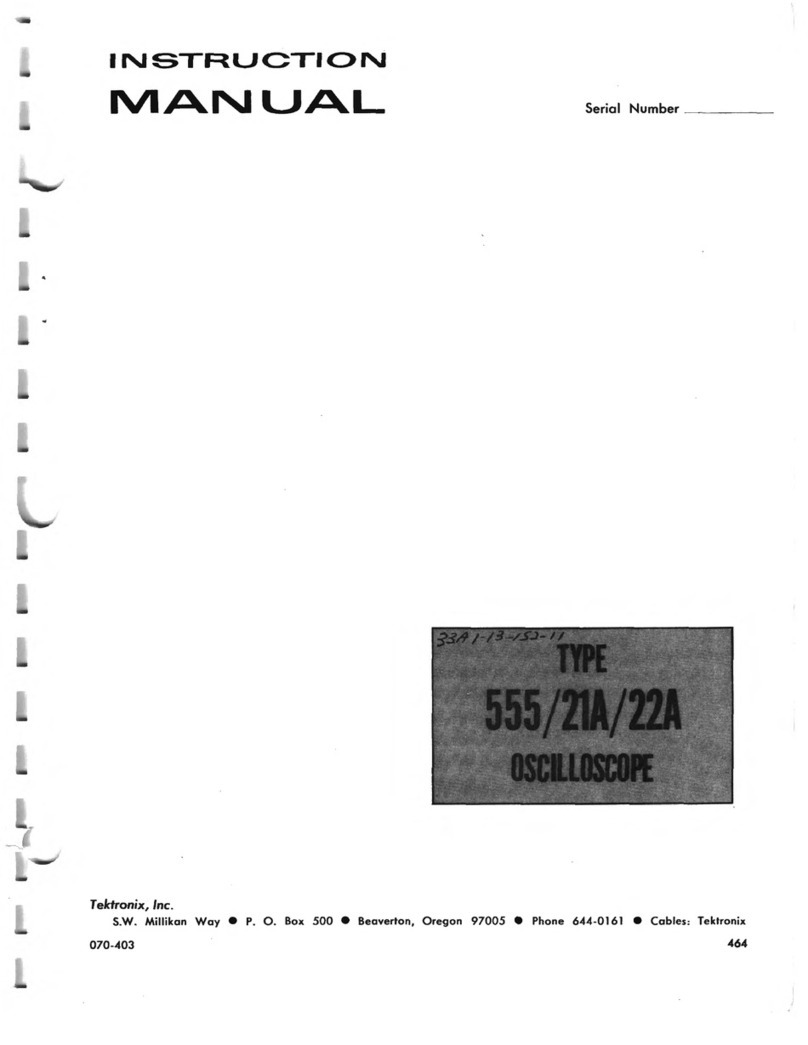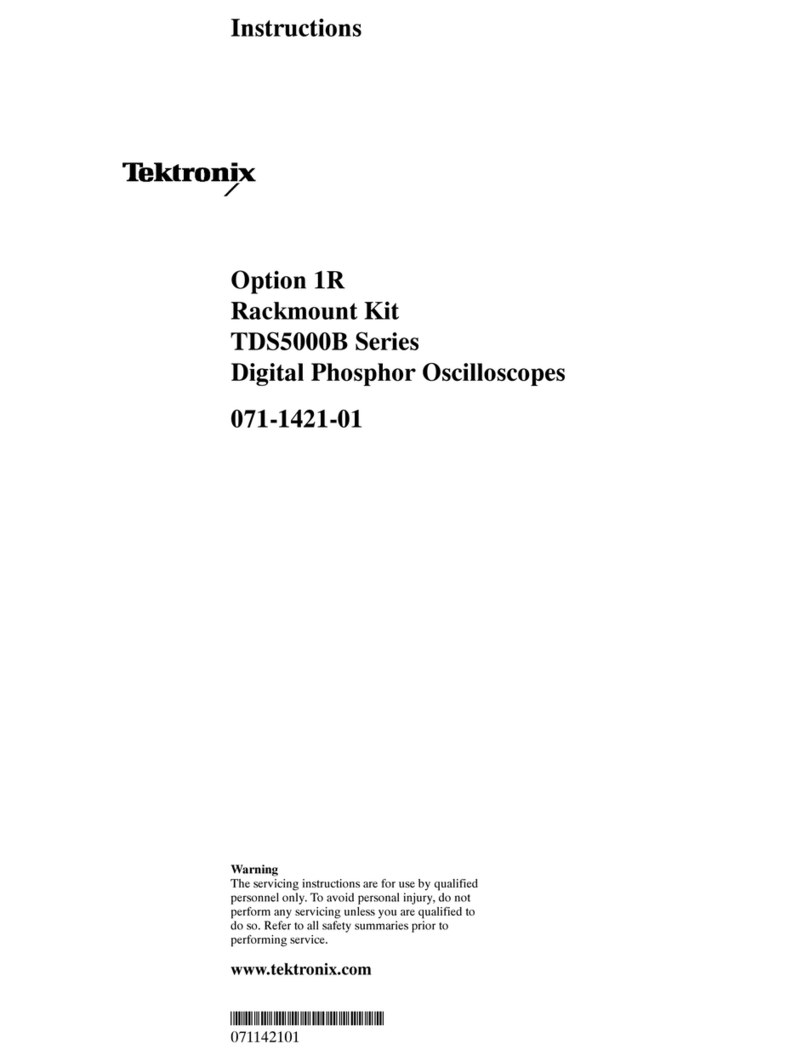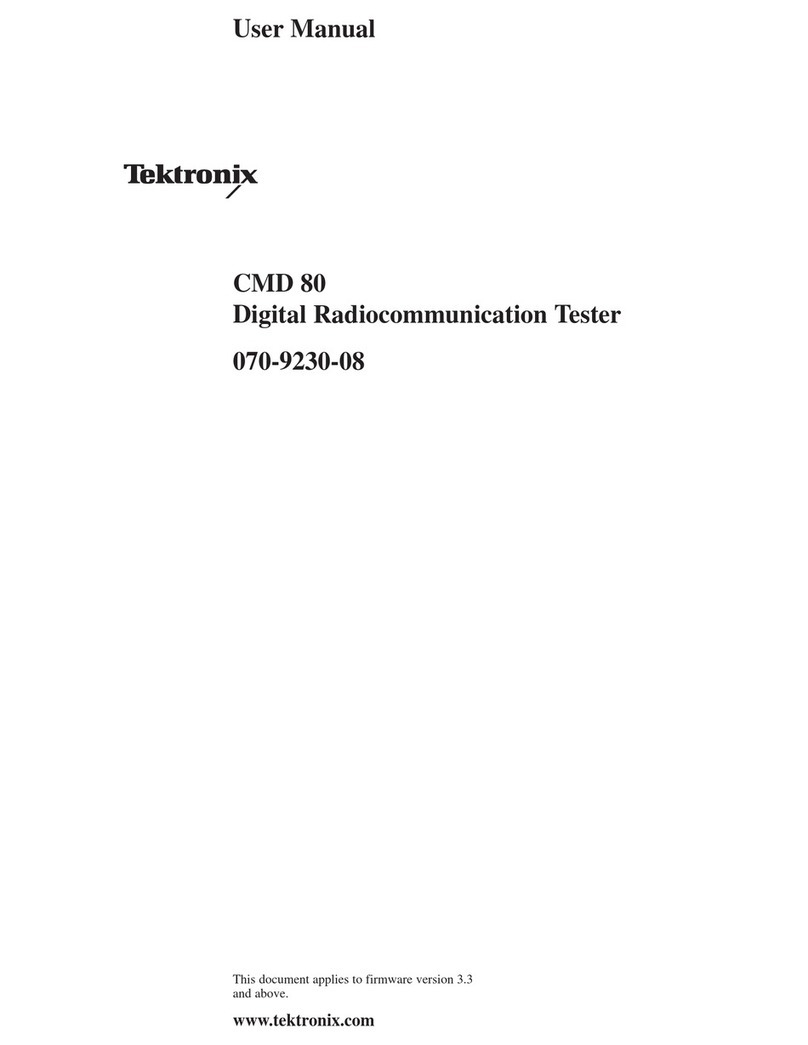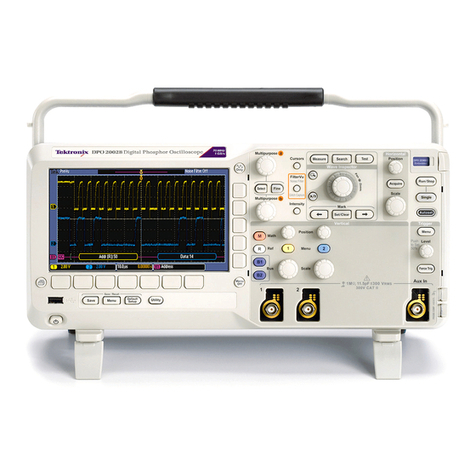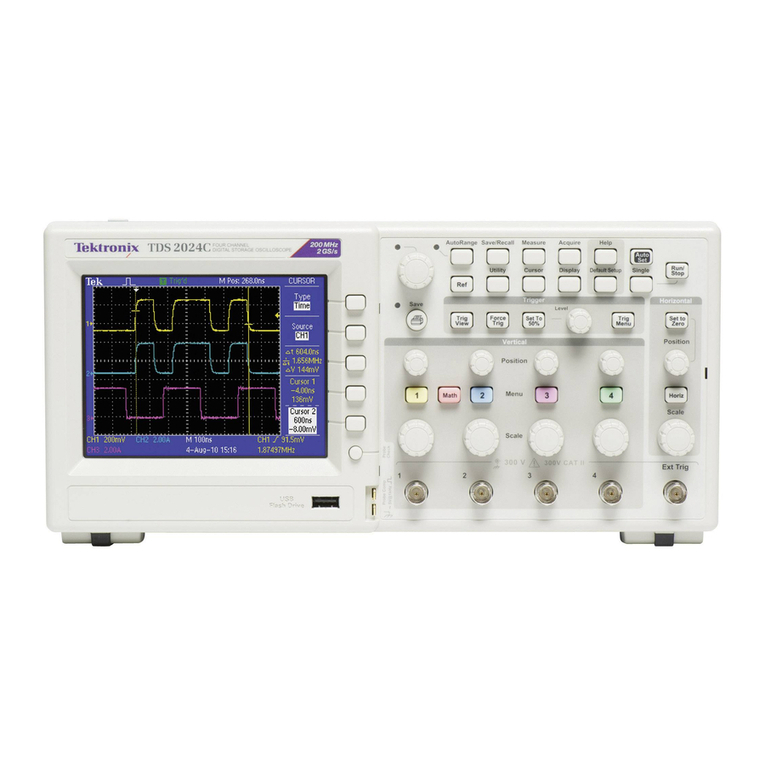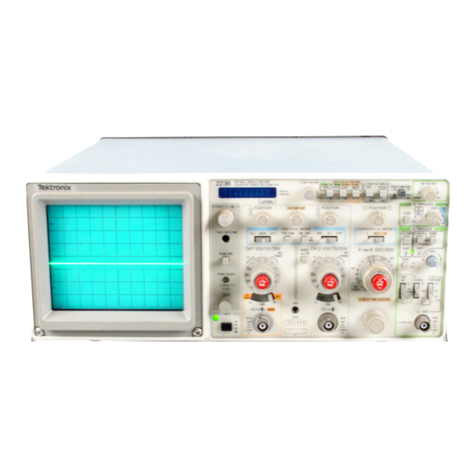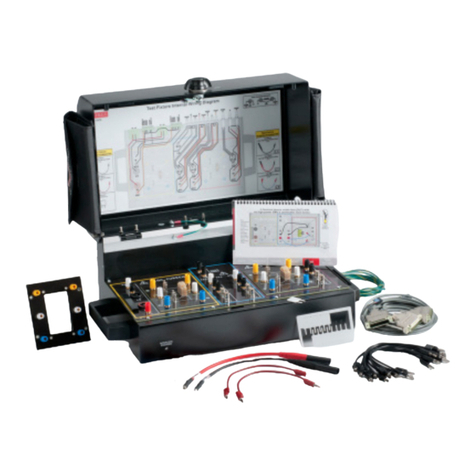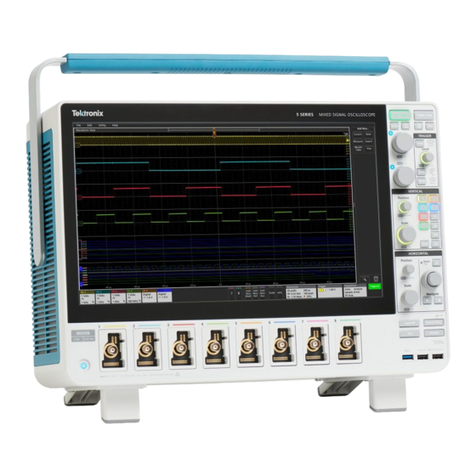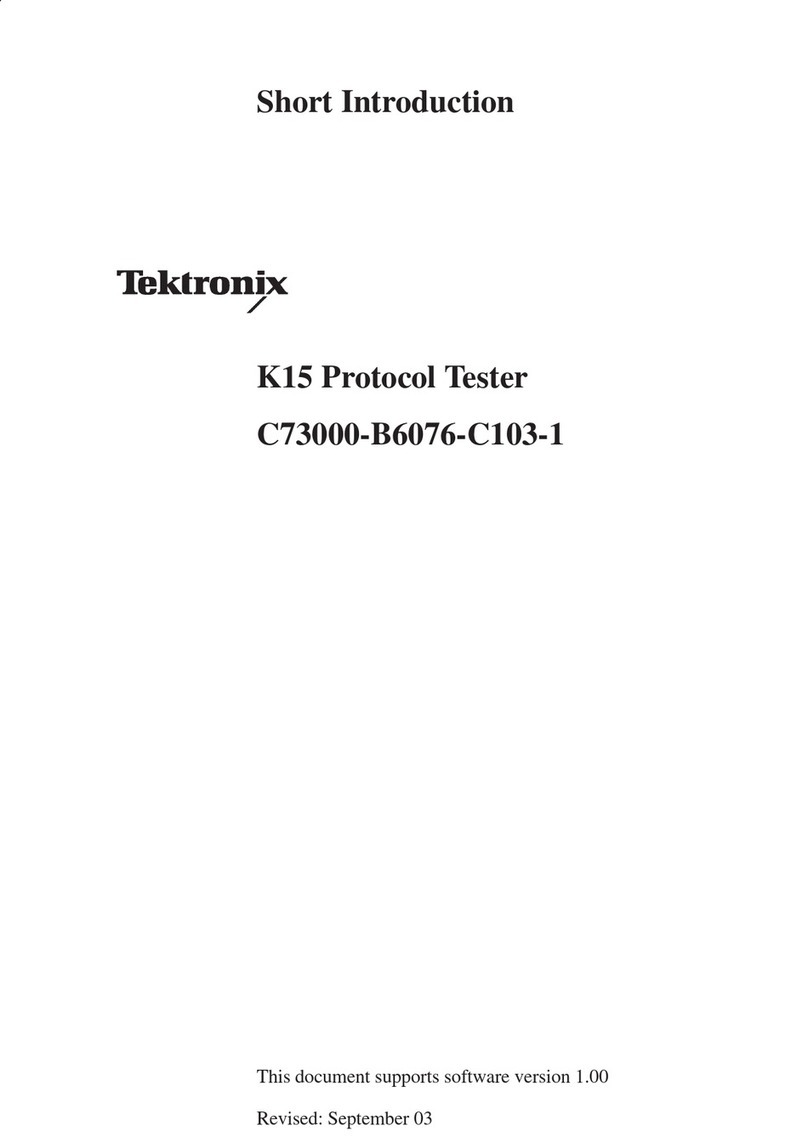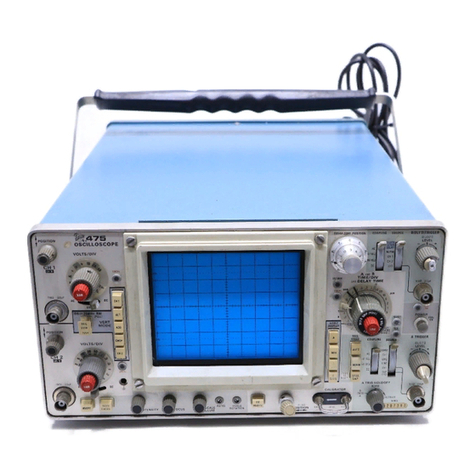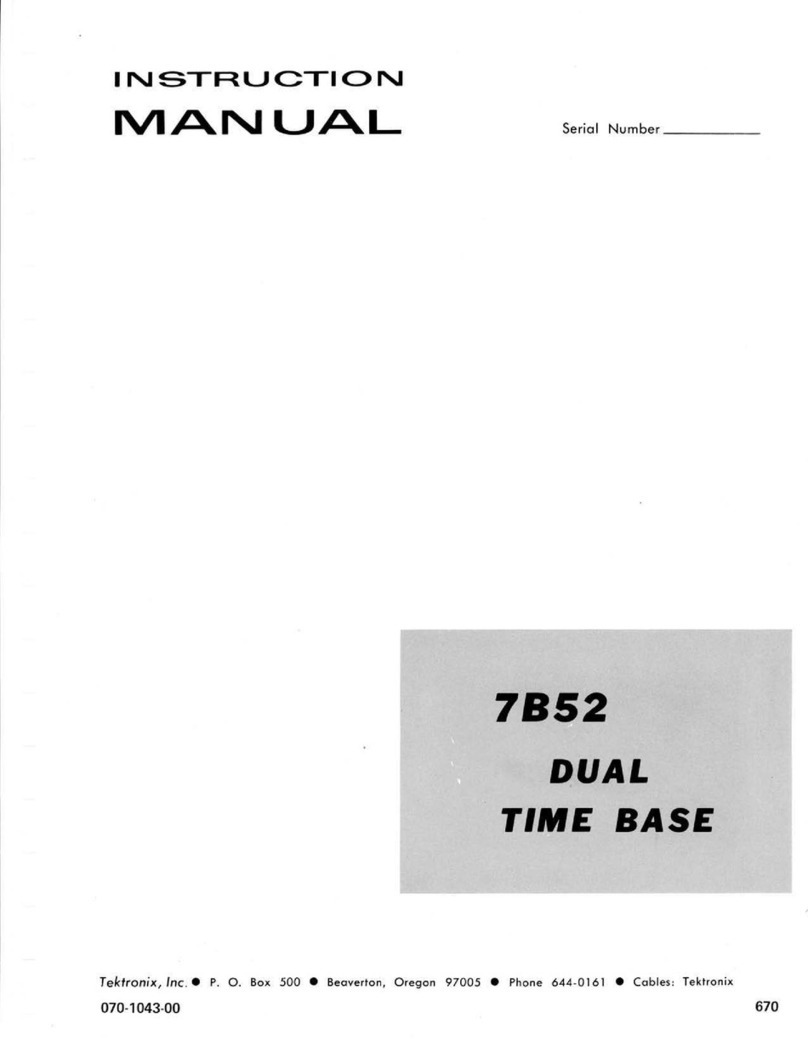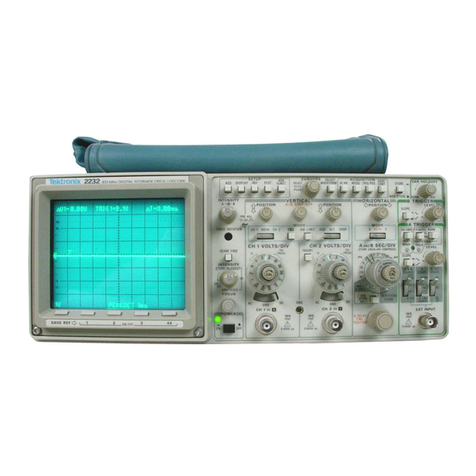
Preliminary
Instructions-Type
321A
(SN
100-5999)
De
Operation
Operation
from
an external de source
is
acomplished
by
connecting the special pigtail-type
de
power cord
in
the
proper manner.
For
11.5-
to 20-volt operation, the black
(+)
and white
(-)
leads are connected to the voltage
source;
for
20-
to
35-volt operation, the green (
+)
and white
(-)
leads are connected to the voltage source. When the
connections to the external de voltage source are properly
made, the external
de
source
is
floating
with
respect to the
Type
321A
chassis.
Up
to
600
volts
difference
is
permissi-
ble,
if
necessary.
To
turn
on
the Type
321A,
set the
POWER
switch
to
EXT
ON.
To
turn
off the oscilloscope, set the
POWER
switch
to
one of the
OFF
positions-TRICKLE
or
FULL.
When operating
from
the external
de
source, the ac
line
cord should be disconnected. That
is,
only
one of the exter-
nal sources should be
used
rather than both
at
the same
time.
NOTE
The internal battery
charger
circuit
is
disconnected
during external de operation. Therefore, external
batteries (if used as the de source)
cannot
be
charged
by connecting the line cord to the
ac
line.
Also,
an
external de source
cannot
be
used to
charge
the internal batteries since the
POWER
switch does not electrically connect the two
sources together.
LOW
BATTERIES
Light
The
LOW
BATTERIES
light
turns
on
when the
following
conditions
exist:
1.
The
POWER
switch
is
set to
BATT
ON and the internal
batteries drop to
11.5
v (
+0.2
v)
or lower.
2.
The
POWER
switch
is
set
to
EXT
ON and the external
source voltage
is
low
enough to cause the
Type
321
A
un-
regulated voltage to drop to about
11.5
v or
lower.
NICKEL-CADMIUM
BATTERY
INFORMATION
General
The
nickel-cadmium
battery
cells
available
for
use
with
this
instrument have been selected as a
result
of extensive
evaluation.
Each
battery
cell
has received an ampere-hour
test, has
met
or exceeded the
minimum
ampere-hour storage
requirement and has been rigidly inspected.
The
battery
cells
used
in
this
instrument should provide a
useful
operating
life
extending over several hundred charge-discharge
cycles.
Precautions
To
extend the
useful
operating
life
of the
nickel-cadmium
battery
cells
used
in
this
instrument,
observe the
following
precautions.
1.
Do
not exceed the recommended charge rate and
per-
iod
(see
Charge
Rate
discussion
which
follows).
2.
Be
sure the battery charger
is
operated correctly as
described previously
in
this
section.
3.
Be
sure to observe the
cell
polarity when inserting the
batteries
(see
Fig.
2-4).
4.
Excessive
discharge of the batteries after the
LOW
BAT·
TERIES
light
comes
on
may
cause one or
more
of
the
cells
to
reverse polarity. Although the
cells
are protected against
immediate damage, repeated polarity reversal
will
shorten
the
useful
life
of the batteries.
Observe the temperature
limits
given
in
the
following
infor-
mation
for
charging, operation and storage.
Maintenance
When the battery
cells
are overcharged or when
dis-
charged to the point of polarity reversal, gas
is
formed
within
the
nickel-cadmium
cells
which
produces an internal
pressure.
The
nickel-cadmium
cells
supplied
by
Tektronix,
Inc.
(Tektronix
Part
No.
146-0010-00)
incorporate a vent
so
this
internal pressure does
not
damage the battery. However,
as the internal pressure
is
relieved, a
small
amount of the
electrolyte may
be
expelled
with
the gas. Although the
cell
will
probably not be damaged,
this
loss
of
electrolyte may
result
in
shorter overall battery
life.
The
batteries and bat-
tery compartment should be inspected occasionally
for
any
electrolyte residue
on
the batteries
themselves
or
in
the
battery compartment.
Any
residue
which
is
found
should be
cleaned away
with
a
2%
solution
of
boric acid
in
water.
A
2%
solution
of
boric acid can be obtained
by
dissolving
about 1
1f4
teaspoons of boric acid powder
in
one cup of
water.
After
the residue has been cleaned
from
the batteries
and the battery compartment, dry the wetted area throughly
with
a soft cloth.
If
the total potential across the battery terminals
(see
Fig.
2-4)
does not reach
13-14
volts
even after the recommended
charge
time,
one or more
of
the battery
cells
is
probably
defective.
To
locate the defective
cell,
first
be sure the bat-
teries have been charged
for
the recommended charge per-
iod.
Then,
while
operating the instrument
on
the
internal
batteries, measure the potential across each individual
cell.
Use
a meter
which
has a long,
thin
tip
to
reach the positive
contact between the batteries. If the individual battery
cell
measures below about
1.2
volts
it
is
probably defective;
above
this
voltage tbe battery
cell
is
probably operating "
correctly.
If
the total potential across the battery terminals
is
13·14
volts
after the recommended charge period, but
the
LOW
BATTERIES
light
comes
on
too soon
when
operating
on
internal batteries, the charge retaining capacity
of
one
or
more
of the battery
ceils
has
probably decreased below
the acceptable
limits.
(NOTE:
Batteries
may
not
be
reaching
full
charge due
to
a defective charger
circuit.)
This
can be
checked
in
a manner similar
to
that described above.
First,
be sure that the batteries have been charged
for
the
recom-
mended charge period.
Then,
operate the
instrument
on
the
internal batteries
until
the
LOW
BATTERIES
light
comes
on.
Now measure the potential across each
cell.
If
an individual
cell
measures below about
1.2
volts,
it
is
probably defective;
above
this
voltage
it
is
probably acceptable
(NOTE:
If
the
voltage of all the
cells
is
above
1.2
volts
and
the
charger
circuit
is
operating correctly, the
LOW
BATTERIES
circuit
may
be
at
fault.)
When replacing battery
cells
in
this
instrument,
charge the
entire set of batteries
at
the
recommended charge rate and
charge period before operating the
instrument
from
the
inter-


